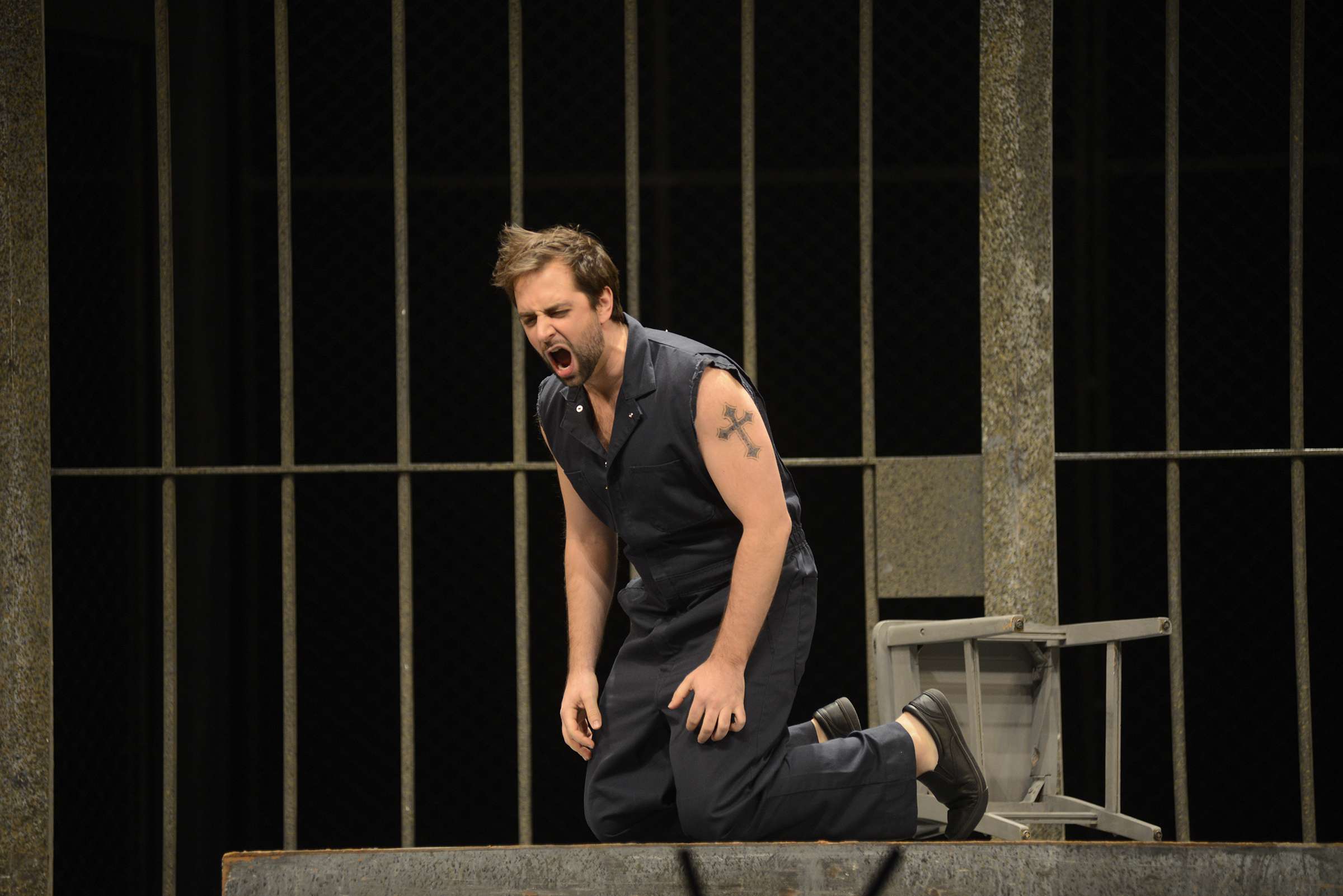|
Back
A Fine Production of a Bad Opera Montreal
Salle Wilfrid-Pelletier, Place des Arts
03/12/2013 - & March 9, 14, 16, 2013
Jake Heggie: Dead Man Walking
Allyson McHardy (Sister Helen Prejean), Étienne Dupuis (Joseph De Rocher), Kimberly Barber (Mrs Patrick De Rocher), Chantale Nurse (Sister Rose), Alain Coulombe (George Benton), John Mac Master (Father Grenville), Mariateresa Magisono (Kitty Hart), Thomas Goerz (Owen Hart), Mia Lennox-Williams (Jade Boucher), Kurt Lehmann (Howard Boucher), Philip Kalmanovitch (The Motor Cop), Aidan Ferguson (Sister Catherine), Rachèle Tremblay (Sister Lillianne), Patrick Mallette (1st Prison Guard), Jeremy Bowes (2nd Prison Guard), Olivier Bergeron (Younger Brother), Aaron Sheppard (Older Brother), Catherine B. Lavoie (A Mother), Valérie Bélanger (Mrs Charlton), Gaétan Sauvageau, Geoffroy Salvas, Clermont Tremblay, Benoît Leblanc and Normand Richard (Inmates), Justin Tousignant (Child-Spoken) and John Giffen (Paralegal)
Chœur de l’Opéra de Montréal, Claude Webster (Chorus Master), Orchestre Métropolitain, Wayne Marshall (Conductor)
Alain Gauthier (Director), Harry Frehner, Scott Reid (Set Designers), Scott Reid (Costume Designer), Eric W. Champoux (Lighting Designer)

E. Dupuis (© Yves Renaud)
Some maintain that Dead Man Walking is the greatest opera of the 21st century. Thank God it’s only 2013. Falling hard on the heels of McGill University’s production of John Musto’s Volpone, it seems that 21st-century-opera has a long way to go before it reverts to an interesting, inventive art form.
The Opéra de Montréal is offering a fine production of Dead Man Walking this week despite the banality and lack of inventiveness of Jake Heggie’s music, and the formulaic, clichéd libretto by Terrence McNally. The production, borrowed from Fort Worth Opera Festival, uses two stories of sliding prison bars and corrugated steel fencing as screens which convincingly suggest, in turn, the Ste Medaille orphanage, prison interiors, parole hearing room, etc. Stage direction by Alain Gauthier, as well as the conducting of Wayne Marshall, were deftly paced, providing a dynamic, forward pulse, particular in the first act. The well-wrought, humorous scene between Sister Prejean and the cop as well as the walk “on the tier” and appropriations from spirituals, jazz and other composers also lent spark to the first act. The monotony of the music and the mundane text in the second act, however, failed to sustain interest.
Singing from the all-Canadian cast was first class. Mezzo-soprano Allyson McHardy as Sister Helen Prejean had the stamina and vocal power to engage the listener throughout her demanding role. The length of her last drawn-out note in “We will walk together, you and I” could land her in the record books. The swarthy young baritone Étienne Dupuis was ideal as the rebellious, remorseless Joseph De Rocher. He sang with warmth, poignancy and despair. Kimberly Barber as Mrs Patrick De Rocher, Chantale Nurse as Sister Rose, Alain Coulombe as George Benton and John Mac Master as Father Grenville were all fine in their comprimario roles, although one had to sympathize with Barber during her long, thankless recitive before the parole board. Why are contemporary composers so afraid of arias or leitmotifs to define characters?
The evening’s surprise was Thomas Goerz as Owen Hart, one of the fathers of the murdered teenagers. His rich, well-rounded bass-baritone radiated throughout the house and brought a wrenching pathos to the suffering of the victims’ families. Also noteworthy were the insouciant but sympathetic Philip Kalmanovitch as the motor cop and the delightful Aidan Ferguson as Sister Catherine. The choirs, prepared by Claude Webster, sung radiantly.
The gritty set by Harry Frehner and Scott Reid, and drab costumes by Reid lent authenticity and a sense of gloom to the production. Eric W. Champoux’s masterful lighting was particularly effective in the closing “crucifixion” scene. Bathed in white light, Sister Prejean gazed down in silence from a walkway at De Rocher with arms outstretched on the inclined injection table, bringing the opera to a somber close.
Earl Arthur Love
|